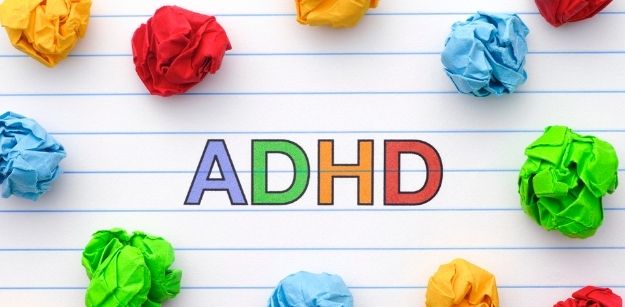According to PubMed statistics, about 5.29% of the total world population struggle with ADHD or ADD. These numbers are considerably more in the US, with about 9.1% of all American children diagnosed with ADHD per year. Boys tend to be affected more than girls.
And while this could be a menace for your kid, ADHD could develop into adulthood. ADHD tends to cause a lot of problems in school, work, and even in relationships.


So, how do I get a diagnosis and ADHD treatment near me?
Below are some helpful tips on where you can visit a doctor and get treatment for yourself or your kid.
ADHD in Children
ADHD mainly occurs in children but may extend into adulthood. The two cases mainly vary in the symptoms of this developmental disorder. Children’s diagnosis also varies from how it is approached among adults. Below are some significant differences in ADHD occurrence in children and adults
Common ADHD Symptom in Children and Adults
Symptoms of ADHD differ in their presentation in adults and children. For instance, children manifest these symptoms more than adults. This variance could be because the adults have developed ways to cover up the prevalent signs of ADHD, and thus it becomes relatively harder to notice them.
Major Symptoms of ADHD
The different types of ADHD all have various dominant symptoms. However, after a broad overview observation, you can deduce the following standard and significant symptoms.
The three are:
- Hyperactivity
- Inattention
- Impulsiveness.
Generally, most of these symptoms are expected for all cases of ADHD. Even so, not everyone diagnosed with ADHD will be hyperactive, inattentive, and impulsive, all at the same time.
Impulsiveness
Impulsiveness in children is chiefly seen in school with occurrences such as:
- Blurting answers even before being called upon
- Acting without fear of the oncoming consequences
Adult impulsivity can manifest in blurting answers in meetings, spending patterns, interrupting conversations or presentations, and engaging in risky actions such as driving too fast.
Adult and children experience impulsiveness, but the way they express it has a significant difference. Below are some impulsive actions that you should watch out for:
- Talks excessively
- Has severe difficulty waiting for their turns
- Gets up a seat when expected to remain seated
- Intrudes on and interrupts others constantly
- Blurts out an answer before one finishes to ask a question
- Your child cannot play quietly
Hyperactivity in Children
In children, hyperactivity is observed through the child’s constant motion. This continuous motion is beyond normal childhood behavior. They’ll often be climbing on things, running around, and mostly they’ll find it quite a challenge to remain still. In closed rooms such as classrooms or churches, they squirm and fidget. In most cases, it is out of their control to stay still and not in motion.
Hyperactivity in Adults
In adults, hyperactivity is primarily experienced as general restlessness. An example is having difficulties sitting still for long hours in meetings or quickly getting bored with tasks once mastered. They always have a feeling of restlessness inside them.
Here are some signs of hyperactivity
- He/she appears to be on the go, always
- Squirms in their seat, tap their hands or feet, and fidget
- Runs and climbs in inappropriate situations
Effects of Hyperactivity
Both children and adults have to bear the outcomes of their hyperactivity as it becomes difficult for a child with ADHD to play with other children; thus, they’ll often feel like they’re left out. Also, hyperactivity reduces attentiveness in class, a situation that may affect the child’s academic performance. In adults, they’re always on the go and may not handle frustrating situations with the best intellectual approach.
Inattention in Children
Inattention in children is observed in schoolwork or projects. They may lose or easily forget where they have placed their items, i.e., school papers. They may not be paying attention to school and are easily distracted by something unrelated to the task or activity they’re doing.
Inattention in Adults
In adults, this symptom manifests more around work and daily routine activities. An example is at work, trying to switch from task to task without completing any assignments.
Inattention symptom is not that unnoticeable for both children and adults. A person with inattention symptoms makes careless mistakes, does not finish tasks, and may fail to pay attention when needed. They may lose or misplace essential items such as keys, phones, books, etc. Below is a list of how inattention can be seen in a child or adult:
- Doesn’t follow instructions
- Ignores the speaker even when in direct contact
- Easily distracted
- Quickly forgets even daily routine
- Has trouble finishing tasks
- Loses vital pieces of equipment needed for a job or activity
- Dislikes tasks that will require long periods of mental effort
- Has a problem with organization
Diagnosis of ADHD in Children
Diagnosing ADHD depends on specific strict criteria. For an ADHD diagnosis, a child must have six or more inattentiveness symptoms or six or more signs of hyperactivity.
Other requirements of the diagnosis criterion include:
Your child:
- Must have shown symptoms in more than just one situation, i.e., In-class and my be in church
- Exhibits symptoms that make lives considerably more difficult on a social and academic level
- Started exhibiting symptoms before the age of 12
- Progressively showing symptoms for more than six months
ADHD Diagnosis in Adults
For an adult to be diagnosed with ADHD, what signs should the subject expose? They must depict five traits of inattentiveness/five hyperactivity symptoms or evidence of impulsiveness. Under current diagnostic guidelines, a doctor cannot confirm a diagnosis of ADHD unless the symptoms have been present from childhood. Your ADHD diagnosis test can be confirmed if the signs have a moderate impact on your day to day life. These effects may include:
- Involving in dangerous driving
- Difficulty in making friends
- Hard to keep relationships with their partners
- Underachievement in tasks involved
If symptoms tend to appear for the first time, it would be rash to diagnose it as ADHD as there could be underlying conditions, such as stress or depression.
ADHD Treatment Near Me
While there’s no definite cure for ADHD, medical specialists have been actively engaged in finding alternative methods to alleviate the condition’s symptoms. Studies show that long term treatment with both medication and behavioral therapy bring about considerable relief to ADHD concerns.
ADHD treatment includes:
i. Prescription medication
Medication treatment involves a class of drugs known as psychostimulants or just stimulants that are an effective treatment plan for people with ADHD. These drugs help children focus their thoughts and ignore distractions. They include Adderall, Adzenys, Concerta, and Ritalin.
ii. Behavioral therapy
Behavioral treatments for patients with ADHD include creating an encouraging routine and clearly stating the individual’s expectations. Other forms of treatment that may benefit the patient include;
- Support groups – it is in these groups that they converse and see how they will help each other in coping with their life difficulties
- Social skills training – this allows a patient to develop and maintain social relationships
- Indulgence in relation techniques such as meditation and yoga which increase attention and focus and decrease anxiety plus depression
In Conclusion:
ADHD is not a condemnation to kids or adults. Anyone could be diagnosed with ADHD. However, the lack of a definite treatment for ADHD should not hinder your child from living everyday life. With one of the reliable ADHD treatments near you, you can go on with your life. Consult a licensed mental health professional today and get enrolled in an effective treatment plan.



